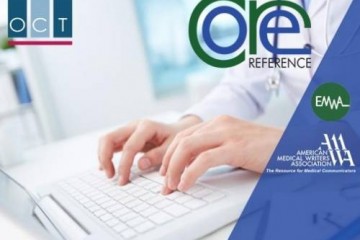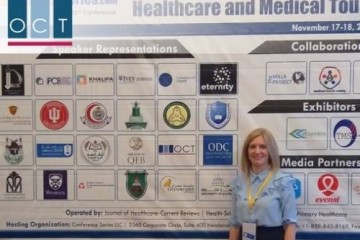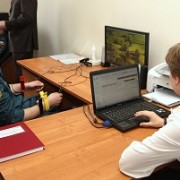Медицинские писатели и биостатистики: как организовать эффективную совместную работу

В сентябре 2016 г. издание Medical Writing, которое выпускается Европейской ассоциацией медицинских писателей (European Medical Writers Association, EMWA), опубликовало статью Евгении Радьковой (ОСТ) и Ивана Добромыслова (Data MATRIX) о взаимодействии медицинских писателей и биостатистиков в работе над клиническим исследованием.
В современных условиях медицинский писатель должен не только уметь работать с медицинской документацией и осуществлять консультации по разработке препарата, но и обладать широким кругозором и компетенциями в области биостатистики и статистических методов, которые применяются в клинических исследованиях. Для успешной работы необходима готовность к тесному сотрудничеству c биостатистиками. Особую значимость это приобретает в рамках работы CRO.
Авторы статьи делятся своим опытом взаимодействия медицинских писателей и биостатистиков, приводят некоторые статистические данные и дают краткий обзор локальных регуляторных требований в Российской Федерации.
Фармацевтический вестник публикует резюме (абстракт) статьи. Полный текст статьи ‘Best friends forever: A pattern of collaboration between medical writers and biostatisticians within the Russian CRO’ доступен по ссылке.
The world is undergoing a boom in clinical trials, with annual increases between 1% and 14. Considering that the average annual growth in recent years has been 4-5%, the number of approved clinical trials may reach 30,000 by 2020.
The Russian Federation is an attractive and fast-growing market for pharmaceutical products. The number of approved clinical trials could increase by 20% by 2020 to reach 1,000. The Russian government continues to invest in pharmaceutical manufacturing and drug development, with implementation of many economic measures and programmes in the last few years.
A main reason for this rapid growth in clinical trials in Russia is the 2010 Federal Law on Drug Circulation. This law imposed new regulatory requirements on the clinical trials industry and stipulated that well-controlled, evidence-based confirmative clinical trials must be performed as part of the drug registration process in Russia. This law applied to most drug categories and included products that had already been investigated and registered in other countries. The result has been a considerable increase of so-called ‘local registrational’ phase III studies. These now represent approximately two-thirds of all clinical trials carried out in Russia.
These new regulations resulted in a rapid increase in demand for regulatory and trial related documents and therefore the development of the medical writing industry in Russia.3 At the same time, pharmaceutical companies have lacked experience in planning and conducting clinical trials, have not been able to liaise with and obtain scientific advice from regulatory authorities, have not had enough personnel knowledgeable about study design and methodology.
Medical writers in Russia therefore need to be able to provide not only writing but scientific advice on drug development and regulatory affairs as well as different aspects of study design and methodology. This means that medical writers must have a good understanding of basic biostatistics and statistical methodologies applied to clinical trials. This demand for high-level knowledge of biostatistics means that medical writers need to work in close collaboration with biostatisticians, especially within the contract research organisations (CROs).
In this article, we describe the collaborative work between medical writers and biostatisticians within Russian CROs and give a brief overview of local regulatory environment in which these specialists operate.
Источник: Medical Writing, Volume 25, Number 3 (Statistics). P. 46-49.
Источник: pharmvestnik.ru



















